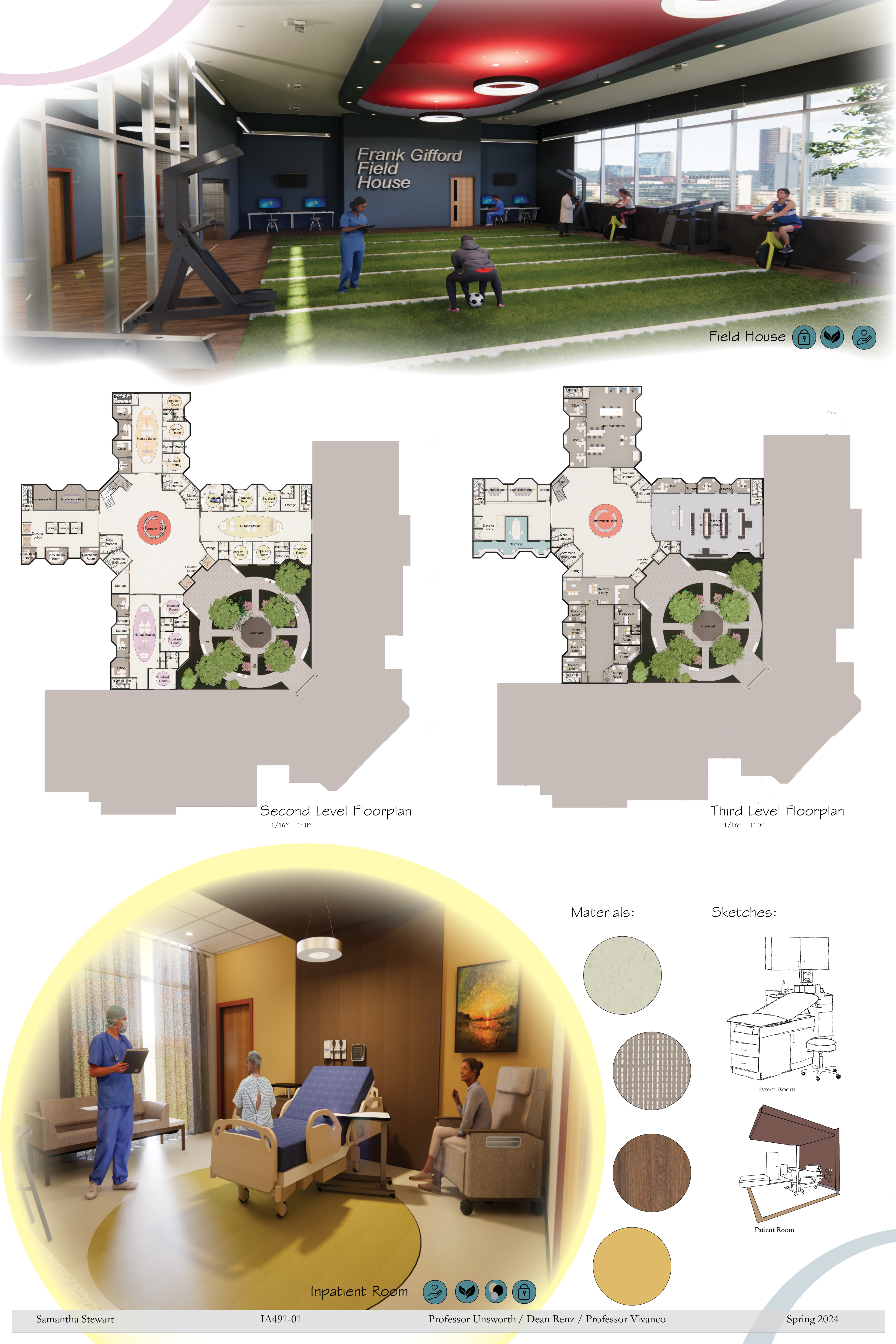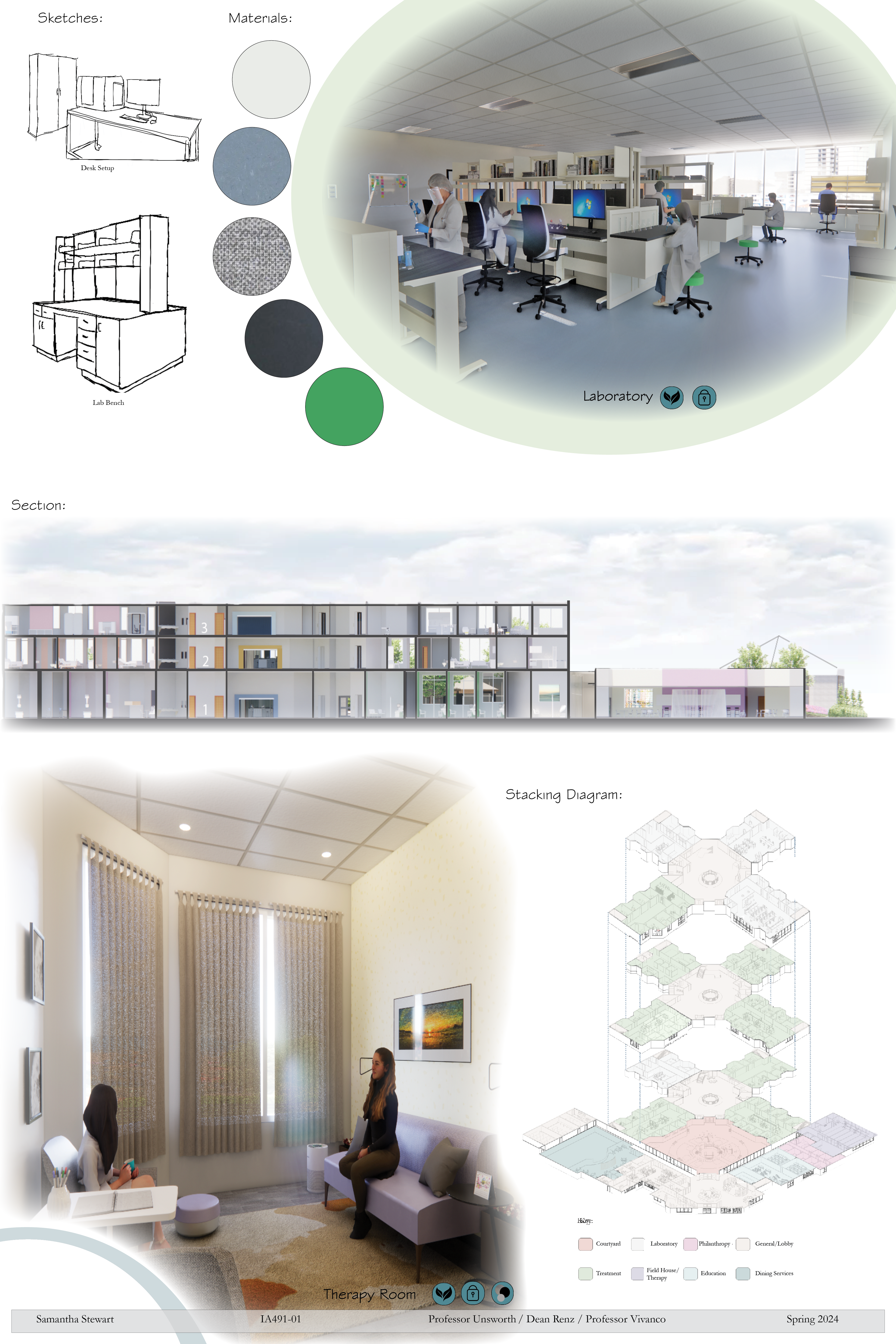Artist Biography
Samantha Stewart, a Senior at Endicott College, anticipates graduating in the Spring of 2024 with a B.F.A in Interior Architecture and a minor in Psychology. Throughout her time at Endicott College, Samantha has engaged in three remarkable internships, specializing in Residential, Hospitality, and Healthcare design. Notably, her internship at Dana-Farber Cancer Institute left a lasting impression, prompting Endicott College to interview her for an article publication detailing her experiences there. Samantha’s academic journey has been marked by consistent excellence, earning her a place on the Dean’s List every year. Additionally, she has been recognized for her achievements by being inducted into both the Kappa Pi International Art Honors Society and the Tri-Alpha Honor Society for first-generation scholars. In pursuit of a well-rounded education, Samantha spent her Junior year studying abroad in Florence, Italy, where she immersed herself in the country’s rich culture and deepened her understanding of European architecture. Looking ahead, Samantha plans to transition from academia to the professional realm, taking a temporary hiatus from her studies to enter the workforce. Concurrently, she aims to pursue her NCIDQ certification, further solidifying her expertise in interior design.
Thesis Abstract
Chronic traumatic encephalopathy (CTE) poses a multifaceted challenge transcending typical medical treatment, impacting individuals such as athletes and veterans with repeated head injuries. This thesis explores the potential fusion of environmental psychology and advanced medical design to create tailored therapeutic environments for CTE patients. By investigating the interplay between physical surroundings and human health, this research aims to offer insights and solutions to enhance the prognosis and quality of life for those affected by CTE.
The study begins by contextualizing CTE within the broader landscape of traumatic brain injuries (TBI), emphasizing its prevalence and profound impact on various populations. It delves into the underlying mechanisms of CTE, highlighting the accumulation of tau proteins in the brain and its associated symptoms.
The role of design theories, including Environmental Psychology, Ecological Theory, and Color Theory, is examined in crafting innovative healthcare environments. These theories offer perspectives for creating patient-centered, sustainable, and emotionally supportive spaces conducive to healing.
Looking to the future, the study envisions a holistic approach to healthcare design for CTE and concussion patients, encompassing education, interdisciplinary collaboration, and innovative technologies. By integrating insights from diverse fields, including neurology, sports medicine, and architecture, this research seeks to advance comprehensive solutions that prioritize patient well-being and prevent future head traumas.




